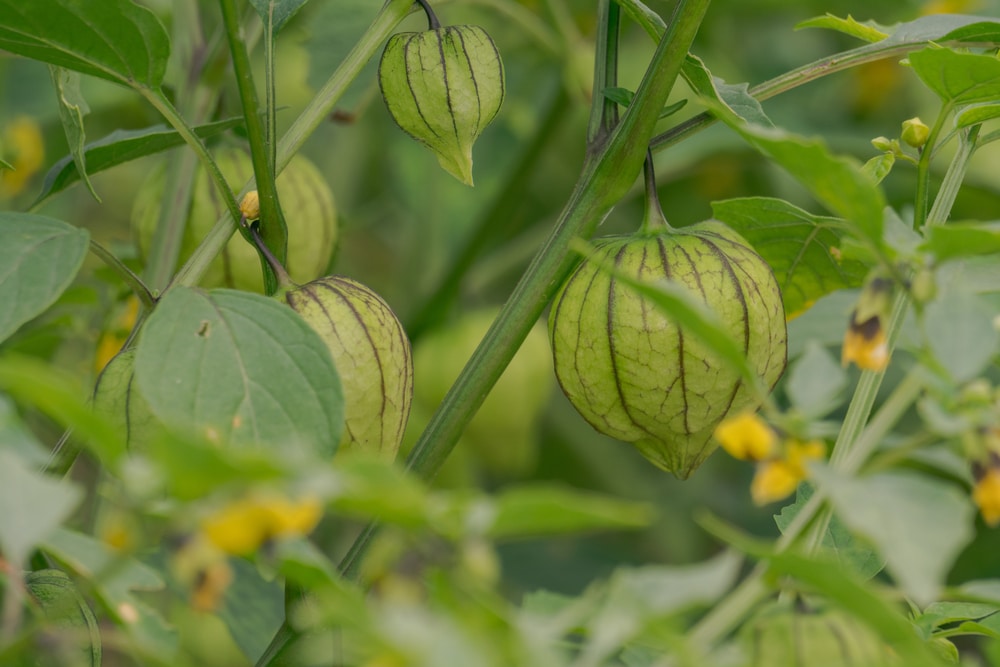Tomatillos are a joy to grow. They’re an easy plant and are essential ingredients in many Mexican dishes. Sometimes problems arise when growing plants. If your tomatillo plant’s leaves are turning yellow, read on to find some common causes and solutions to your problem.
What Is a Tomatillo?
Tomatillos are native to Mexico. Despite their name translating to little tomato, they’re a different plant. Their name just comes from the fact that they look like little tomatoes. Tomatillos grow wrapped in leaves that you have to peel back, while tomatoes don’t have that leafy outer later.
The two fruits have very different flavors. While tomatoes are described as sweet and tangy, tomatillos are more tart and acidic. They are commonly used in recipes like salsa verde.
Why Are My Tomatillo’s Leaves Turning Yellow?
Overwatering is the leading cause of yellowing leaves on your tomatillos. When you overwater your tomatillo plants, they stop absorbing nitrogen, which causes the leaves to turn yellow. However, a nitrogen deficiency can happen without overwatering your plants if the soil lacks nitrogen.
Unfortunately, underwatering is also a cause of yellow leaves on tomatillo plants. These drought-tolerant plants can survive not being watered for a while. Still, eventually, their leaves will turn yellow because of it.
Another vital need not being met can cause yellow leaves. Without enough sun, your plant’s leaves will start to yellow. These plants need a lot of sunlight, around six hours of direct light daily. The same happens if your plant gets too much sun, though.
What Do I Do About Yellow Leaves?
You must figure out the culprit before taking action. If your plant isn’t getting enough water, but you think it’s overwatered, you may harm it further by watering it less. Here are some solutions to common causes of yellow leaves.
Not Enough Nitrogen
If your plants are turning yellow because they lack nitrogen from the soil, you can add fertilizer or compost to help raise the nitrogen levels in the soil. You should see improvements soon after.
Similarly, you may see other nutrient deficiencies causing the yellow leaves. Make sure your soil is at the proper pH for tomatillos. Each type of essential nutrient has different signs that show on the plant when it is deficient, so it should be easy to tell what the cause is if it’s nutrient deficiency.
Too Much or Too Little Water
You can check for over or underwatering by feeling the soil or using a moisture meter. If the soil is too dry, you may be underwatering it. If it is too damp, you may be overwatering it.
Refer to growing guides for your tomatillo if the leaves of your plants are turning yellow from overwatering. They typically only need about one or one and a half inches of water per week. If you have been giving them more than that, it’s important to cut back. Your plant’s health will improve pretty quickly after that.
If underwatering your plant is the culprit, it will be easier to tell than if there isn’t enough nitrogen in the soil or if you’re overwatering the plant. This is because tomatillos react to underwatering after a lack of water for quite some time. You will know if you haven’t been watering your plant. To fix this, start watering it the necessary amount, and it will bounce back.
Not Enough or Too Much Sunlight
Pay attention to how much light your tomatillo plant gets every day. This will help you determine whether too much or too little light is the issue causing yellow leaves. You can also see if your plant is sort of crispy. Crisping leaves occur when there is too much light.
When you determine the cause, you should move the plant if possible. If it’s potted, that should be easy. However, if it isn’t potted, you may have to remove it from the ground and relocate it.
Have Fun Growing Your Tomatillos!
Now that you can figure out the cause of the yellow leaves, you can help your plant and get back to the fun part of growing tomatillos. There are many companion plants that grow well alongside tomatillos.

